Key Takeaways
This article will basically be a full roundup of everything you need to know before starting inbound marketing as a B2B SaaS company. I’ll talk about what works, what doesn’t work, and examples of companies using each tactic. I’ve only included inbound tactics I’m familiar with and have seen success with in the past.
To this day, inbound marketing is still one of the most successful ways for B2B SaaS companies to bring in new leads.
Yet, I’d say about 75% of B2B SaaS companies are doing it wrong.
Either butchering the execution or just not knowing where to start.
I mean, realistically, most companies aren’t in a place to manage every inbound marketing tactic out there.
However, you can focus on 3-5 tactics and really make them work for you.
I’m also a big fan of creating a system to help scale up these efforts (more on this later).
But I put together this beast of a guide to go over how B2B SaaS companies should focus on inbound marketing.
These are all channels I’ve managed myself, so I stayed away from referencing anything I wasn’t familiar with.
Hope you enjoy!
The Golden Rules of B2B SaaS Inbound Marketing
While inbound marketing can act as your cheapest customer acquisition channel, there are a few golden rules to it:
- Use the 20/80 Rule: Use the 20/80 rule for everything. With all the tactics that fall under inbound, it can be very easy to get lost in the weeds. Focus on the tactics that are low leverage/high reward. Specifically, tactics that take 20% of your time but deliver 80% of the results.
- Focus on helpful content and community building: At its core, inbound marketing is based around building a community with content that engages your target audience. Content that makes them want to follow you for more.
- Don’t sacrifice quality for quantity: In a similar vein to the point above, inbound marketing is going to take a lot of effort to work. While you can’t manage every tactic out there (maybe you can if you have a proper marketing team), you can manage a few tactics very closely. However, for inbound to work, you can’t go with a quantity-over-quality approach. Yes, you’ll get more reach for that content, but what is the content doing beyond getting in front of your ICP? The best inbound marketing strategies are all based around having your audience see you as a trusted resource for that area of expertise. It goes beyond just reach; you want them to actively seek you out when they see your brand name. At the end of the day, the best leverage you can have is having an audience that already has positive associations with your brand.
Should We Even Bother With Outbound?
This is more of a “it depends” situation.
Should you run ads if your inbound is working?
I’ll go against the grain and say yes.
There doesn’t have to be an ongoing battle between inbound and outbound marketing.
If outbound works for you, then great!

Source: MakeWebBetter
If it doesn’t, maybe pause spend and try again later.
There’s no reason why you should have to prioritize one over the other.
In fact, in B2B SaaS, omnichannel marketing is almost a must.
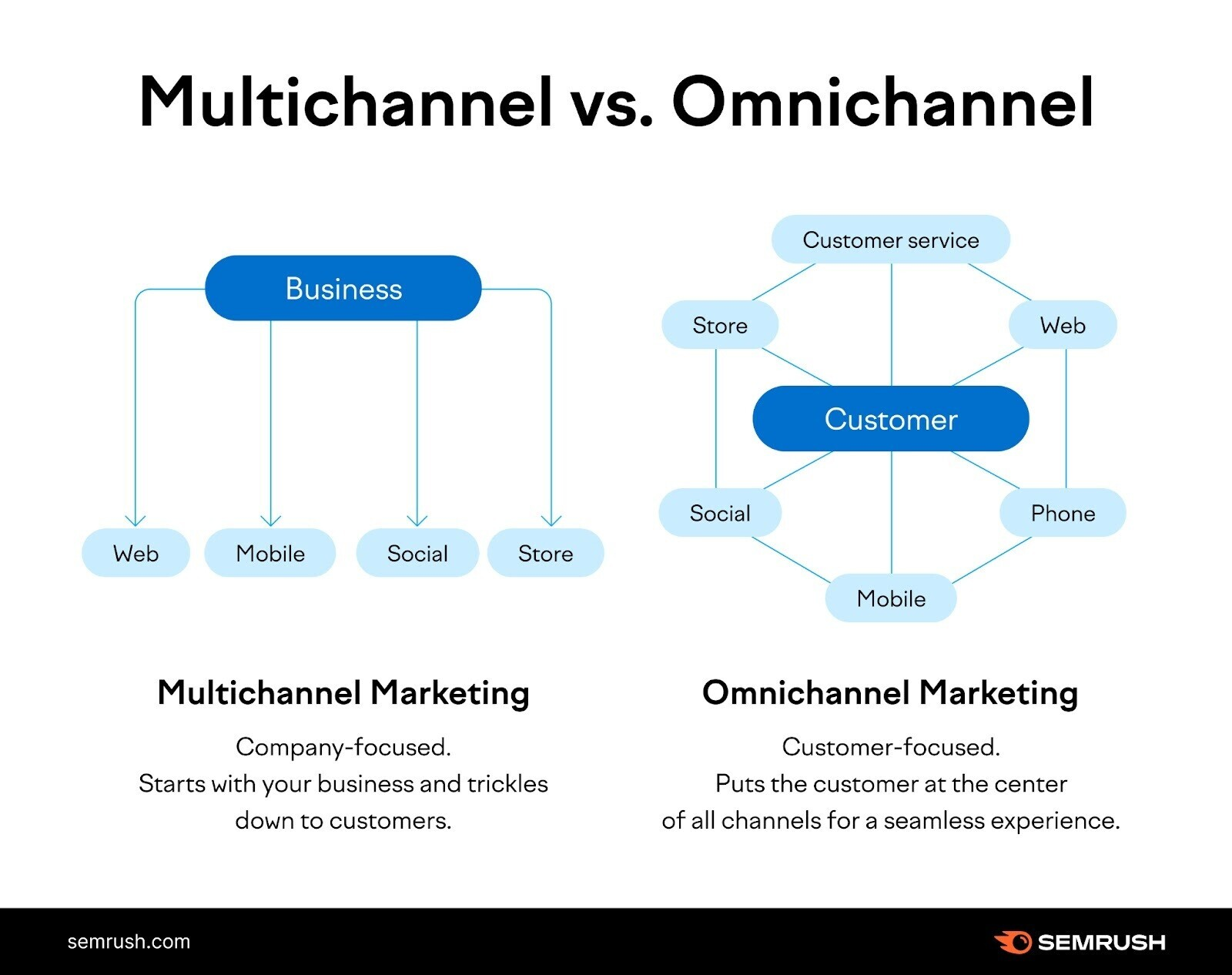
Source: SEMrush
So, the more channels you can have aligned, the better off you’ll be.
If anything, your outbound and inbound channels will all make it more likely for a user to take that final step.
They all contribute to building awareness, trust, and consideration with your audience.
Here’s How Inbound Marketing Should Ideally Work
Going off the golden rule section, I just wanted to help you visualize the bird’s eye view of what B2B SaaS inbound marketing should look like.
- Discovery through content: People discover your content through that content medium
- Engagement through content: People start engaging with your content and building up trust
- Trust built through content: After engaging with your content for some time, they’ll eventually have some trust/familiarity built up with your brand.
- Nurture through content: If you’re prioritizing MQLs, you can use email marketing (or content in general) to nurture them throughout that process. You’re basically keeping them around with high-quality content. Sometimes, even running promotions.
- Convert that opportunity through content: The final finish line. What all your work was leading up to. Now that your audience has gone through these stages, it’s time to have clear-cut bottom of funnel content that captures and converts them when they’re making their final purchasing decision. I mean, it is called a funnel for a reason.
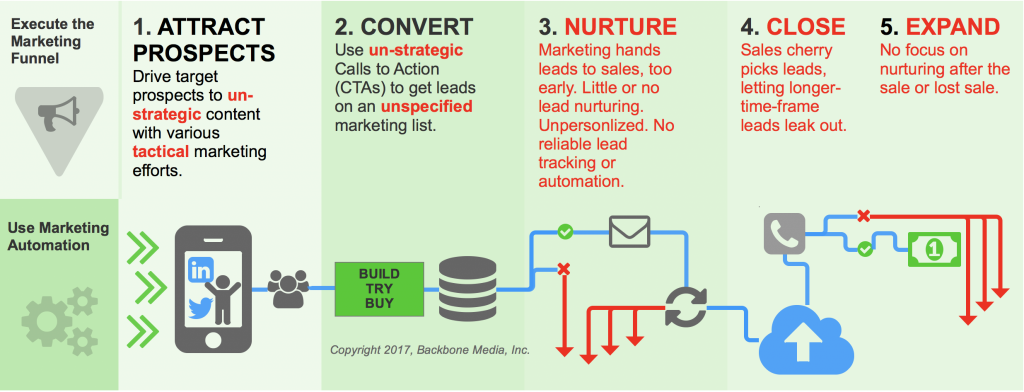
Source: Backbone Media
Before You Even Get Started With SaaS Inbound Marketing
I know, I know, you’re ready to read the actual strategies.
I’ll keep this section quick.
There are just a few essential things you need to have in place before you get started with inbound marketing:
- Know who you’re targeting: From the very beginning, know what industry you’re targeting and why
- Have your ICP set: Have a specific target persona built out on who you want to target
- Listen to your customers: Understand why your customers will consume your content in the first place. What will make it seem like you get them?
- Map out their journey: What are all the likely touchpoints your audience will engage with you with, and what will be that light switch for when they’re ready to convert
- Figure out what channels to start with: What channels will give you the most reach for your audience starting out?
- Figure out your strategy/goals from the start: Why are you doing this in the first place? What is your overall goal here?
- Look at what’s working for your competitors: While I’m not a fan of copying competitors, at least look at their strategy to see if there’s anything worth replicating.

Source: Demodia
Inbound Marketing Strategies Designed for B2B SaaS Companies
Okay you finally made it.

Let’s dive in.
I’m going to only include strategies I know personally work.
I’ve never attended a trade show or conference, so I can’t speak to the effectiveness of them.
The other tactics, however, I’ve personally worked with and have seen success with them.
Either for myself or my clients.
1. Use SEO to Target Your Audience’s Full Buyer’s Journey
So, obviously, as an SEO consultant, I have to start with SEO.
So you already know what SEO is, so let me briefly touch on what works in SEO:
- Focus on the tactics that are guaranteed to drive revenue: Again, we have the 20/80 rule. But, with SEO, it really applies here. There are almost endless things you can focus on in SEO, and unfortunately, endless things that won’t necessarily move the needle for you. Really get into the nitty gritty about what will work and what won’t work for you. If you’re creating content for search, only create content that will serve a purpose for you (i.e. drive revenue, build your brand, make people consider you more)
- Avoid getting caught up in vanity: Going off the previous point, it is very easy to get caught up in the vanity of SEO. Focusing on rankings, traffic, or domain authority. While these metrics can be helpful, they shouldn’t be your end-all-be-all metric. Especially traffic. Traffic can tell you if visitors are actually coming to your site through search, but that traffic isn’t guaranteed to be qualified. You can easily increase traffic for any website, but what good is that traffic if it doesn’t move the needle or increase brand familiarity?
- Have a clearly defined positioning and ICP: This is one most companies neglect. You absolutely should have some brand/positioning strategy before you start with SEO. The biggest downfall here is that you can render all your content useless if your ICP/positioning changes. It’s rare when it does happen, but imagine all of that work going in the toilet.
- Start with a strategy and roadmap: This is, unfortunately, way too common for most companies I audit. Their SEO strategy is based on picking a random keyword out of a hat. It can work this way, but it’s likely to lead to vanity traffic, as I mentioned before. In fact, 30% of B2B SaaS marketers don’t even have a strategy in place. Before you even get started, plan out the topics you know will drive revenue for you. Once you have a full list of those topics, you can prioritize based on where you’ll see the most value. If brand building is your goal (and not revenue), you can prioritize topics based on that goal. It all starts with an overarching goal/strategy, and everything else falls underneath that.
- Focus on the user and not just the search engine: This is the most common mistake I see companies make. While SEO is the channel to capture that traffic, your content shouldn’t just be “SEO content.” Yes, your content should be optimized for search engines, but it shouldn’t sacrifice the quality of your article. At the end of the day, someone is going to be reading that article. And would you rather have that first impression be a robotic, unhelpful piece of content or a piece of content that leaves your audience wanting more? Focus on the latter.
The golden rule of 20/80 is the most important thing to consider here.
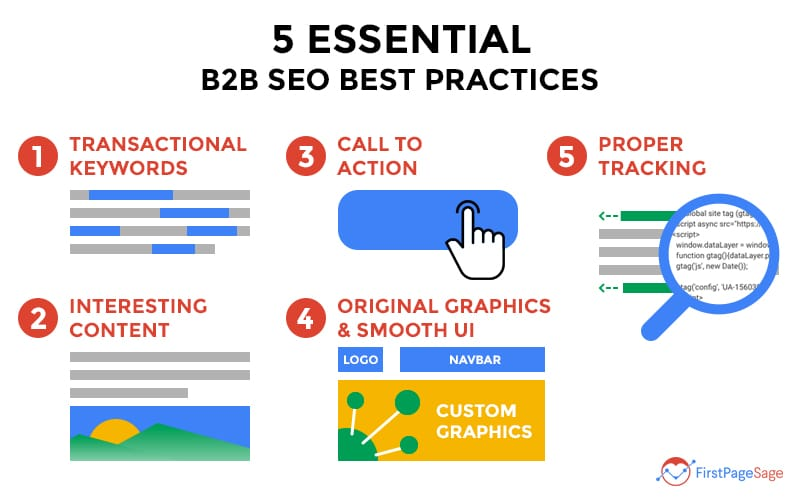
Source: First Page Sage
There are 1,000s of things you can be doing on SEO, so really hand–pick the tactics you know will work for you.
Again, the tactics that are low leverage/high reward.
But, SEO will easily be the channel offering the most scalability potential.
It’s a low-cost tactic that can provide for you over the long term.
You just have to do it right starting out.
If you need help with getting started, I also created this SEO audit checklist specifically for B2B SaaS companies.
Examples of B2B SaaS Companies Doing SEO Right
I’m going to go with a 2 pronged approach on this one.
I’ll cover both ClickUp and Monday.com.
To me, these companies are the gold standard of B2B SaaS companies killing it with their SEO.

They have an entire range of content built out to cover their entire funnel.
Not to mention them covering every aspect of BoFu:
- Monday Alternatives
- Best Project Management Software
- Best HR software for Startups
- Monday vs. ClickUp
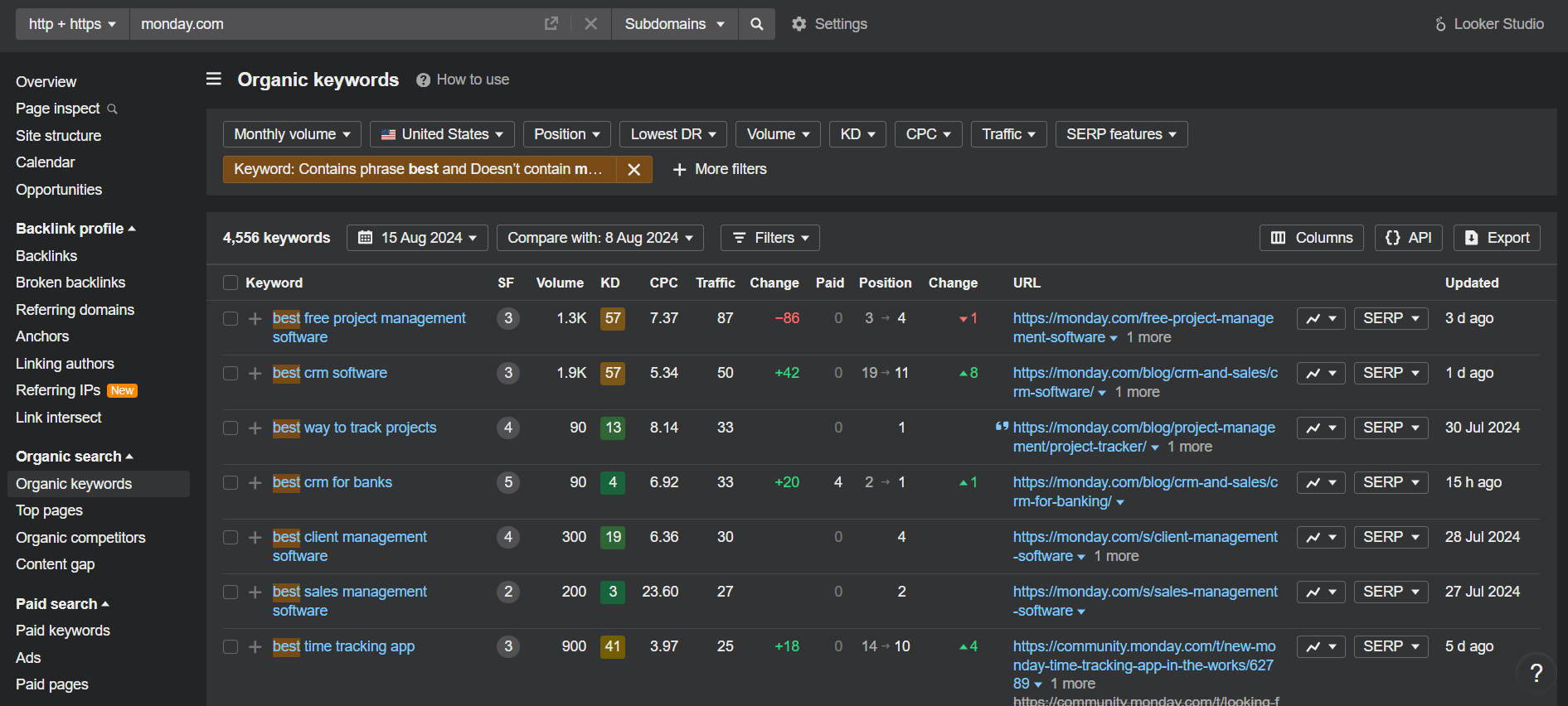
Hell, they both even created an alternative article against themselves!

2. Actually Use Social Media to Educate or Entertain; Don’t Half–Ass it
While I am mostly an SEO, I do post on social media almost weekly and I’ve seen solid success from it.
I also encourage almost all of my clients to post on social media, too.

Here’s the thing about social.
Most B2B SaaS companies out there completely half–ass their social media strategy.
They:
- Just lazily post their article without a summary
- Create infographics that have nothing to do with their audience
- Don’t put any effort into creating something worth consuming on that platform
The thing that irks me about social, especially LinkedIn for B2B marketers, is there’s plenty of untapped potential there still.
The majority of your ICP is going to be found on LinkedIn.
Almost 96% of all B2B SaaS marketers are on LinkedIn.
And in some cases, your audience is looking to either learn or be entertained.
This is your opportunity to establish your brand as a resource for your audience.
To become a reliable source of information or entertainment around that topic.
You should aim to become a trusted source of information for that client.
BUT, for social to work, you have to focus on creating content that’s digestible for each platform.

Source: Walnut Folks
If it’s LinkedIn, you should be posting easy to read/high value content that takes less than 2 minutes to consume.
If it’s TikTok or Instagram Reels, this should also be a 2–minute video that’s easy to watch and understand.

Shorts, carousels, and infographics all work extremely well on social media.
Even better, you can repurpose the majority of this content, too.
All it takes is a little bit more effort not to be lazy.
While it’s not anything official, a common method I use for social media content is the DISH method.
That is:
- Digestible: Is it easy for them to consume on that platform?
- Informative: Is this content unique? Is it worth reading about?
- Shareable: Does it entice users to share your content with others?
- Helpful: Is this content actually applicable/actionable for them?
These 4 areas can pretty much contribute to any area of your marketing strategy.
Examples of B2B SaaS Companies Doing Social Media Right
It would make sense for a social media tool to do well on social media, right?
Hootsuite is the perfect example of what a company should do on social media.
With almost 500,000 followers on LinkedIn, they are definitely a company to take inspiration from.

Similar to Ahrefs, the thing I like about their social strategy is that their social posts are based around their product’s use cases:
Their posts aren’t just promotional; it’s a mix of education and entertainment that works extremely well for social media.
3. Use Email Marketing to Nurture the Audience You Already Have Captured
Email marketing is still one of the best inbound channels out there
Full stop.
After all this time, it’s still the marketing channel with the lowest CAC.

Source: FirstPageSage
It makes sense, too.
You’re quite literally marketing to a captured audience.
It’s not like social or YouTube where you’re competing with 1,000s of other creators.
They (assumingly) willingly signed up for your newsletter and have shown interest in what you have to say.
Assuming you’re genuinely providing value through email marketing, it will likely be one of your top channels.

However, just keep a few things in mind:
- Like social, make your content digestible for that email; don’t just throw your article in there and call it a day
- Don’t overload your emails with CTAs, go 90% value/10% CTA
- Offer personal thoughts, not just repurposed content
Even better, the analytics from email are almost unmatched.
You can see:
- Who’s clicking on what
- Where they’re clicking
- How long they spent on your email
- Their name and email address
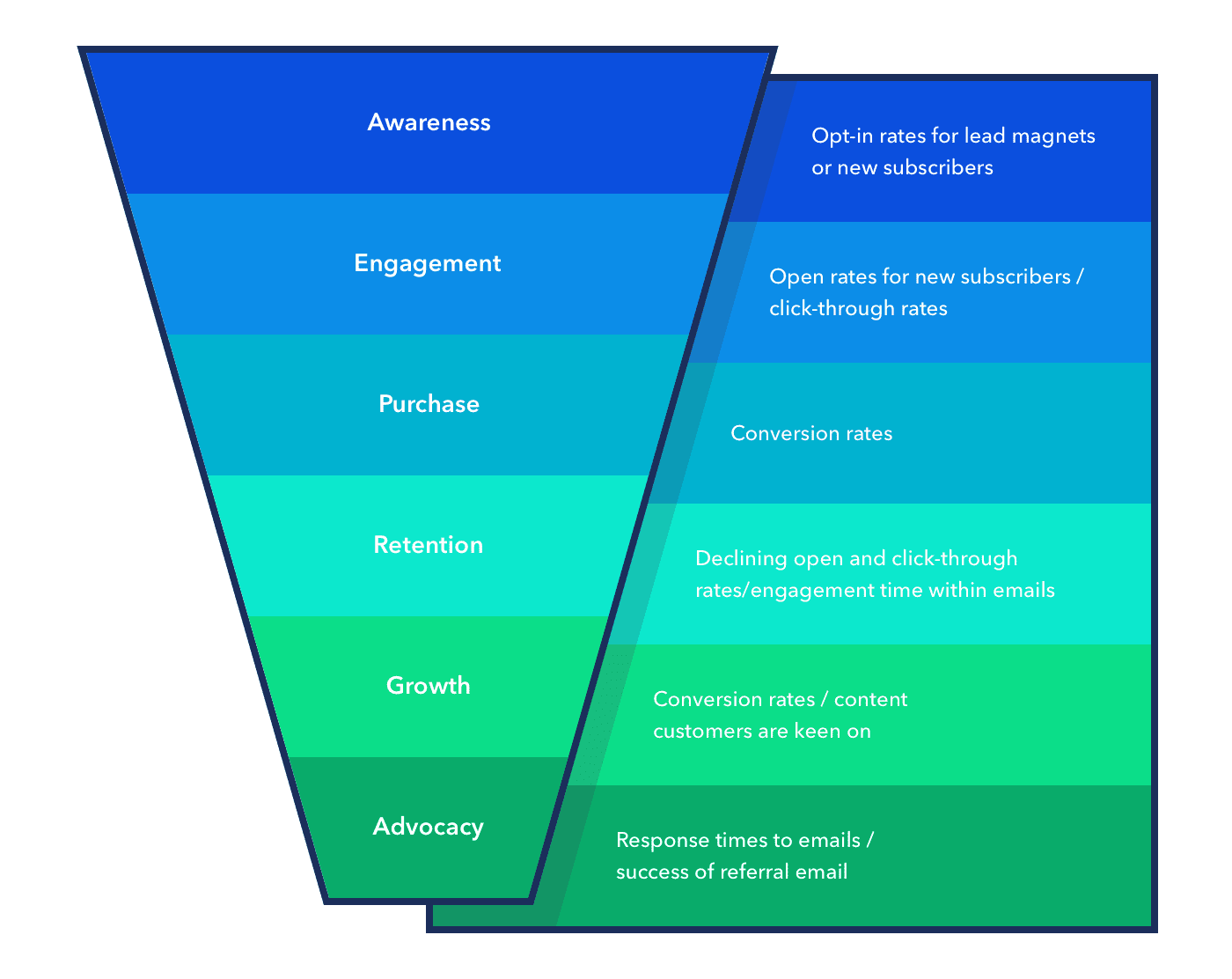
Source: Vero
You can and should set up automated drip campaigns, too.
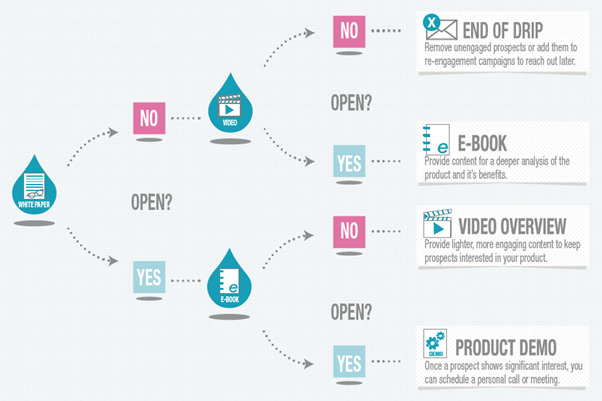
Source: Crazy Egg
This allows you to segment your audience and set up automated emails based on different actions they take on your website.
It could be an email asking them to come back to the site or it can be a more promotional one if you find they visited your pricing page but left.
Email marketing is a huge missed opportunity if you’re not taking advantage of it.
4. Position Your Employees (NOT COMPANY) As a Thought Leader
I think this is an area of B2B SaaS marketing that’s only going to grow over time.
It’s almost an internal variation of influencer marketing.
As we shift into more personal brands, people are moving away from the faceless corporate brand.

Readers want something they can relate to and identify with.
You’ll still want to publish as a company, but ideally, you’ll want your founders or C-suite to actively post.
Not only will you get more reach out of this, but your brand will become way more relatable.
You can even encourage your employees to do it, too.

Source: GaggleAMP
I’ve seen marketing agencies where almost every employee was posting carousels on LinkedIn.
They have a ton of brand reach and conversion opportunities just by opening up the door to employee posting.
The more growth they see, the more growth your overall brand will get out of it.
Not to mention that this can lead to additional conversations with your employees beyond just interacting with your brand.
Having a personal face behind a company almost encourages them to personally get to know them versus engaging with a faceless brand.
Examples of B2B SaaS Companies Doing Employee Advocacy Right
While they’re more of an agency if anything, I think contact studios are doing things right when it comes to employee advocacy.
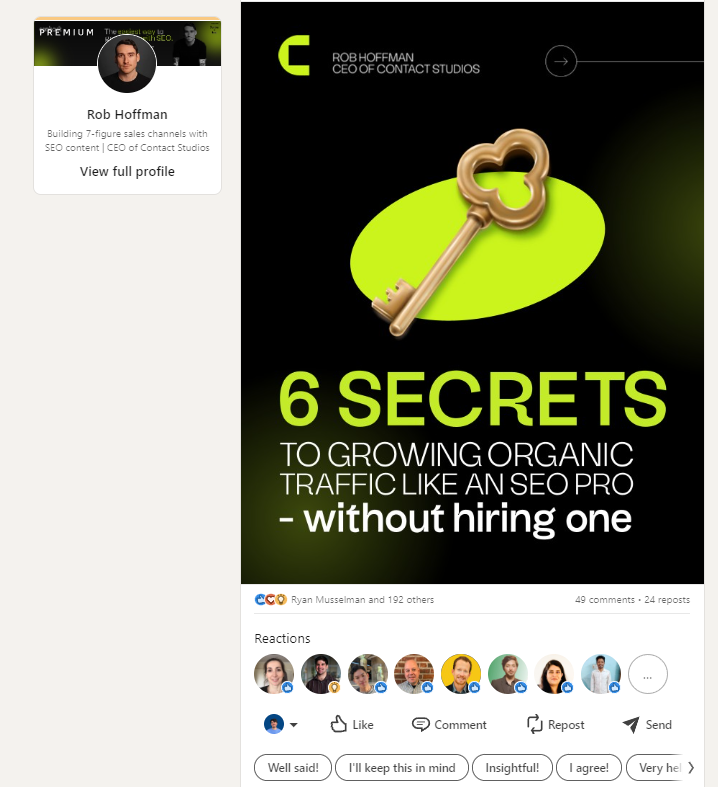
They have:
- Tyler Dixon (13,850 followers):
- Tyler Fyfe (17,233 followers):
- Rob Hoffman (47,849 followers)
Almost all of them are creating in-depth guides covering different fields of their industry.

5. Attend Other Podcasts, More Specifically, Go Where Your Audience Is
This is generic advice I see in every inbound marketing article, so I’ll be a little bit more specific here.
Yes, you should attend podcasts.
You know this.
But what they don’t tell you is how to go about attending a podcast.
Yeah, having the reach in general is great, but what if that reach was positioned in the right place?

Instead of me attending other SEO podcasts – which other SEOs listen to – I’ll want to attend other podcasts that cover adjacent areas of my industry but aren’t directly related.
So for me, my target audience is B2B SaaS marketers, specifically CMOs, VPs of marketing, etc, so my focus would be to attend podcasts from growth marketers or in-house marketing teams and talk about pain points directly related to them.
A CMO likely isn’t listening to an SEO-specific podcast, but they are probably listening to a more generalist podcast where I can act as a subject matter expert for SEO.
It’s a matter of finding those adjacent podcasts and figuring out how to get on them.
Examples of B2B SaaS Companies Doing Podcasting Right
In this example, I wanted to cover Rand Fishkin (former MOZ CEO and founder of SparkToro).
If you’ve been in marketing (or B2B), you’ve probably heard his name at least once.

What I think he does well is push the idea of going where your audience is.
Not just attending adjacent podcasts but attending podcasts where his audience frequents.

So SparkToro is an audience research platform that allows you to see where your audience goes.
Like:
- What they’re actually searching
- Who they follow
- What websites they visit
- What videos they watch
Kind of creepy, but that’s besides the point.
With that tool in mind, he’ll attend different podcasts where he knows people interested in his tool would be listening to:
Like:
- SEO podcasts for audience research
- Generalist podcasts talking about how to do better audience research
- Going beyond attribution (getting more out of your audience than what you have)
- Talking about audience first marketing
Overall, it’s an extremely solid strategy that he makes work for him, especially with the brand he already has established.
Here’s a whole talk he gave on this exact strategy:
https://www.youtube.com/watch?v=ztqJjkda7M0
6. Consider Publishing Thought Leadership on Other Websites
No, this isn’t guest posting.

^ This is unfortunately my spam folder.
This is actually finding external opportunities where we can publish actual thought leadership.
Value put out by your senior leaders on websites where your ICP frequents.
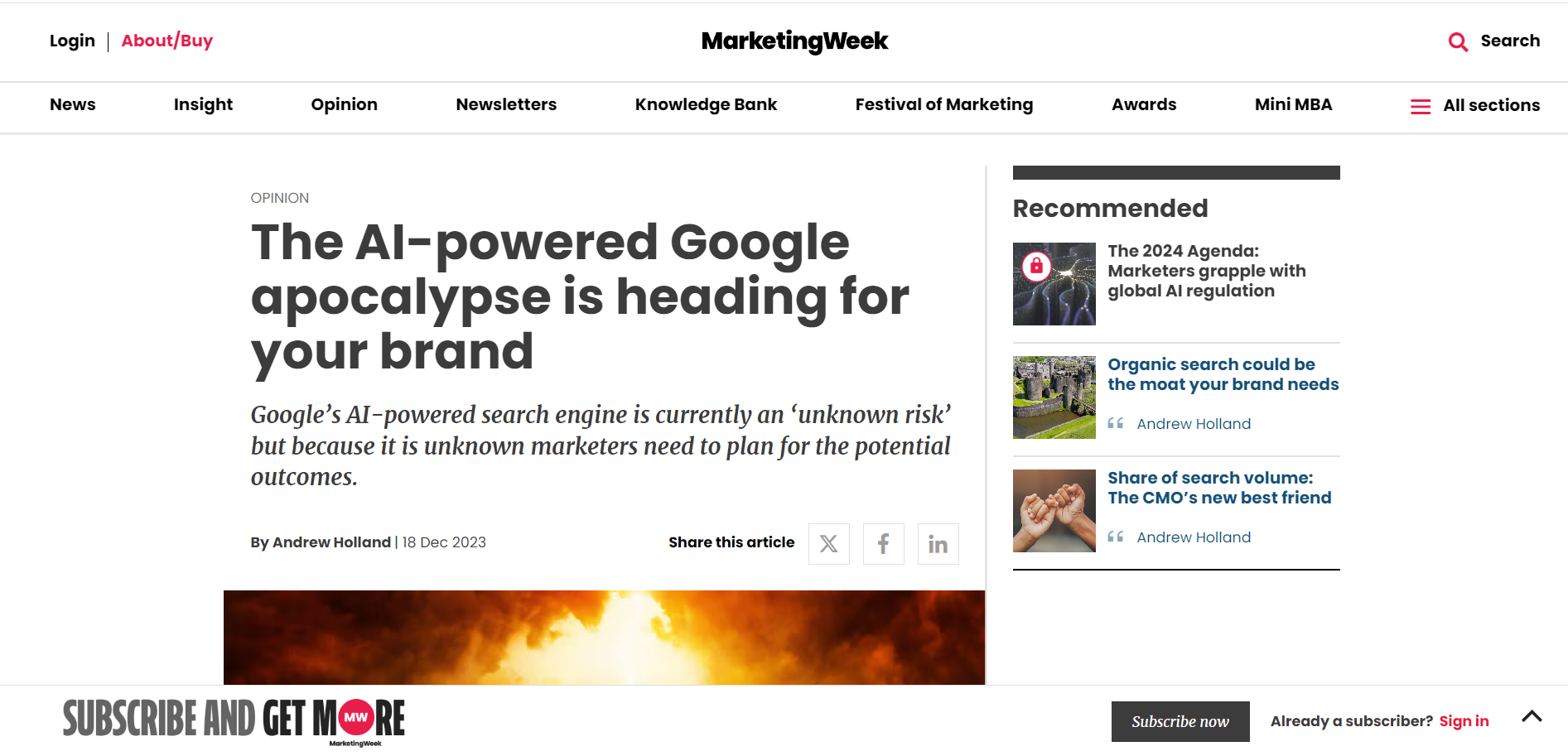
If you’re an early-stage startup with a disruptive product, have your founder publish an article on Forbes (easier said than done, I know) covering your industry and why it’s ready for a change.
The goal isn’t to promote but to educate.
What is something this CEO knows that we don’t know?
What’s a new trend we should expect?
This is what real guest posting should be.
You get the value of PR while also getting a backlink opportunity.
It’s probably one of the best brand–building tactics out there.
7. Create Content That Positions Your Brand as a Resource
When people think of content, they just think they need to have content.
Content for the sake of having content.
I can’t tell you how far from the truth that is.
Yes, content obviously works, but you have to make it work.
Especially when we’re fighting for our audience’s attention.
And the best content that does this is content that builds a community.

Source: HubSpot
Hubspot (the king of inbound) is a perfect example of this.
They:
- Publish helpful and comprehensive articles
- Publish helpful videos
- Have courses to help train you
- Have a dedicated email audience
- Post helpful content on social media
- Have dedicated podcasts to different areas of their industry
- Create tools, templates, and resources that are all designed to be the best out there
They have all of these resources dedicated to their audience.
And people aren’t reading it because they have a ton of content.

People are reading it and coming back since it’s genuinely helpful.
While it will be tough to scale to the level of content Hubspot has, you should at least take their approach when creating content.
Fine, I’ll Give Another Example (Not Just HubSpot)
Outside of HubSpot, I think Ahrefs is the gold standard when it comes to content marketing.
Their CMO, Tim Soulo, is absolutely brilliant.
They seem to always be executing on all cylinders, especially as a bootstrapped company.

Not only do people love their content, but they’ve established themselves as a primary resource around that content.
They have:
- Helpful videos
- Helpful content
- Helpful social posts
- Helpful resources
Even better, almost all of their content takes a product-led approach.
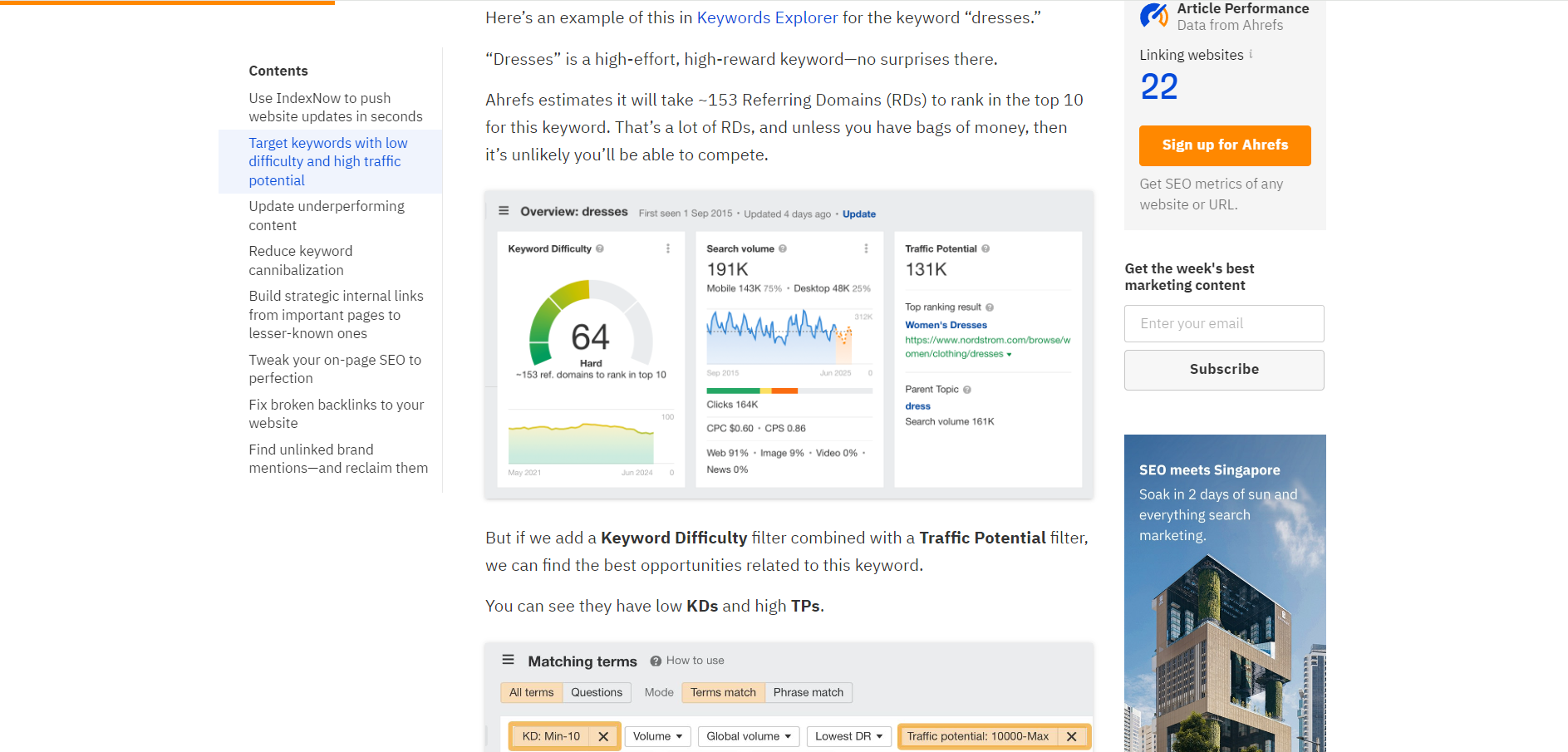
Meaning, they position their tool as a primary solution for most of the content they create.
Not only is their content extremely valuable, but it gets you to consider their tools in the process.
8. Have Other People Market Your Company For You
I still think affiliate marketing is an underrated strategy for most B2B SaaS companies.
Especially PLG SaaS companies.
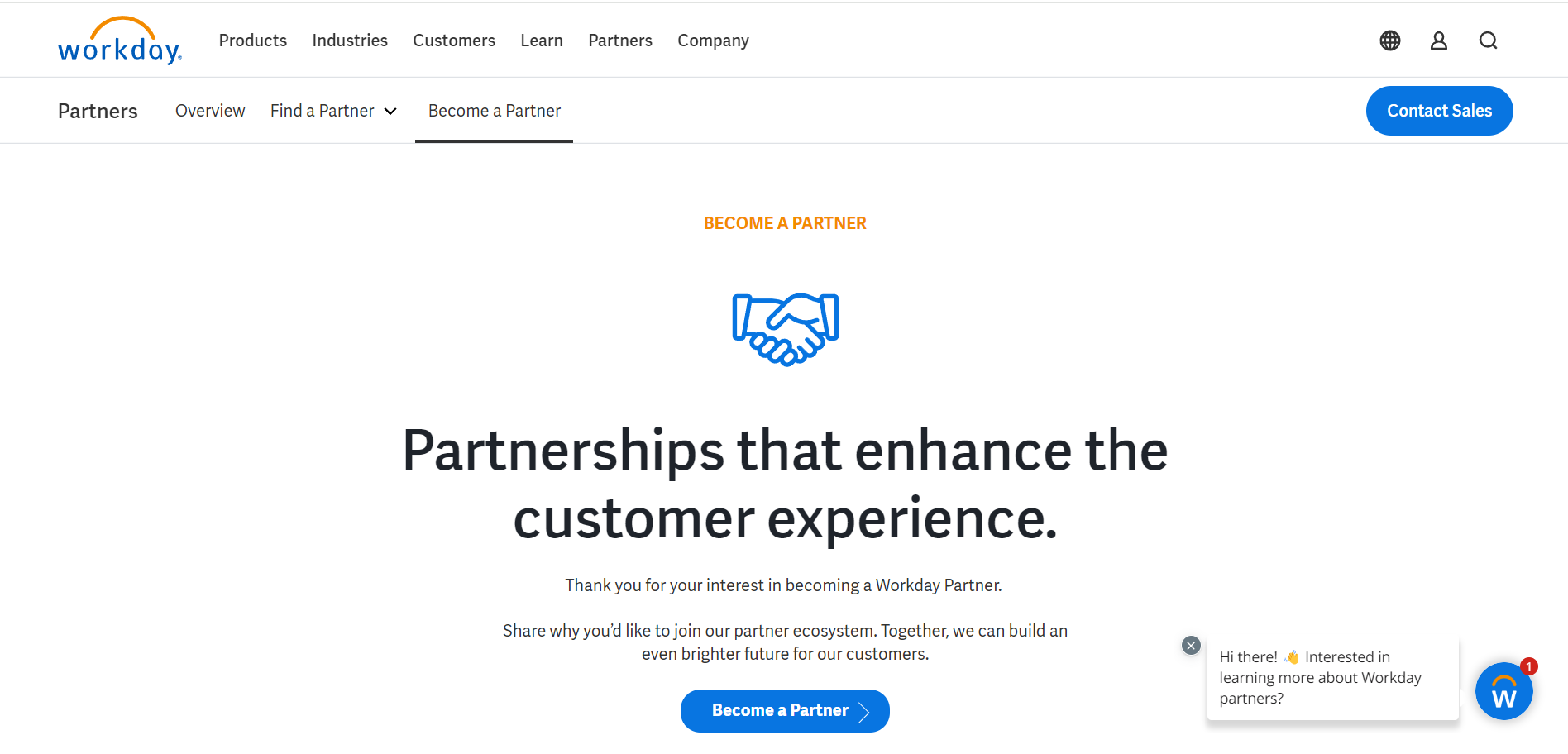
Affiliate marketing doesn’t even involve a whole lot of effort on your part.
Obviously affiliate marketing might be tough for an enterprise-sized company, but for most SMEs, it’s still a solid and effective strategy.
While yes, it will partially hurt your margins by offering a commission based on those sales, you really didn’t even need to put any effort in for those sales in the first place.
The work was almost entirely done by your affiliate partner.

They’re likely taking an inbound approach, too.
So, while it’s not the best brand–building tactic out there, it is a solid short–term strategy for building leads to your platform.
9. This Might Be Controversial, But Don’t Be Afraid to be Controversial
When you’re actually publishing thought leadership, don’t hide behind a ghostwriter or publish some lukewarm take everyone knows.
Actually be controversial.
Get people talking about your take.
The best thought leadership content is content coming from a C-suite that’s boldly calling something out.
That means:
- Challenging the status quo of your industry
- Getting people to think differently about how things should be done
- Inspiring people to challenge you (as the saying goes, “there’s no such thing as bad press”)
You, unfortunately, have to piss people off to make this work.
That doesn’t mean piss everyone off.
It just means you’ll likely be pissing some groups off.
But seriously, people don’t share lukewarm takes; they share takes that challenge industry standards.
If your company is an industry disrupter, you best believe you should be doing this.
Examples of B2B SaaS Companies Being Controversial
While the tool itself might be controversial, I think RB2B is one of the best examples of a company not afraid to shy away from controversy.
Their CEO, Adam Robinson, is one of the most followed creators on LinkedIn, with 100,000 followers.
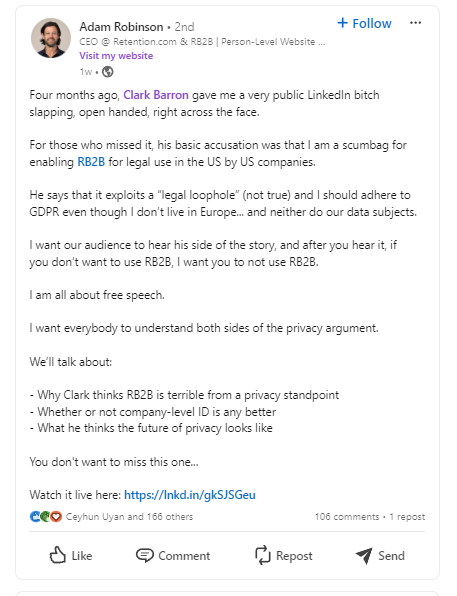
He is constantly publishing thought leadership around his industry that gets people talking about his product.
His approach may lead to him pissing people off, most notably his debate with Clark Barron, but overall, it’s still a widely effective approach.
He is not afraid to shy away from controversy whatsoever.
But hey, it gets the people talking about him.
10. Publish Studies with FIRST-PARTY DATA
I can’t begin to tell you how well industry reports do.
Especially in less competitive markets where companies aren’t publishing this information.
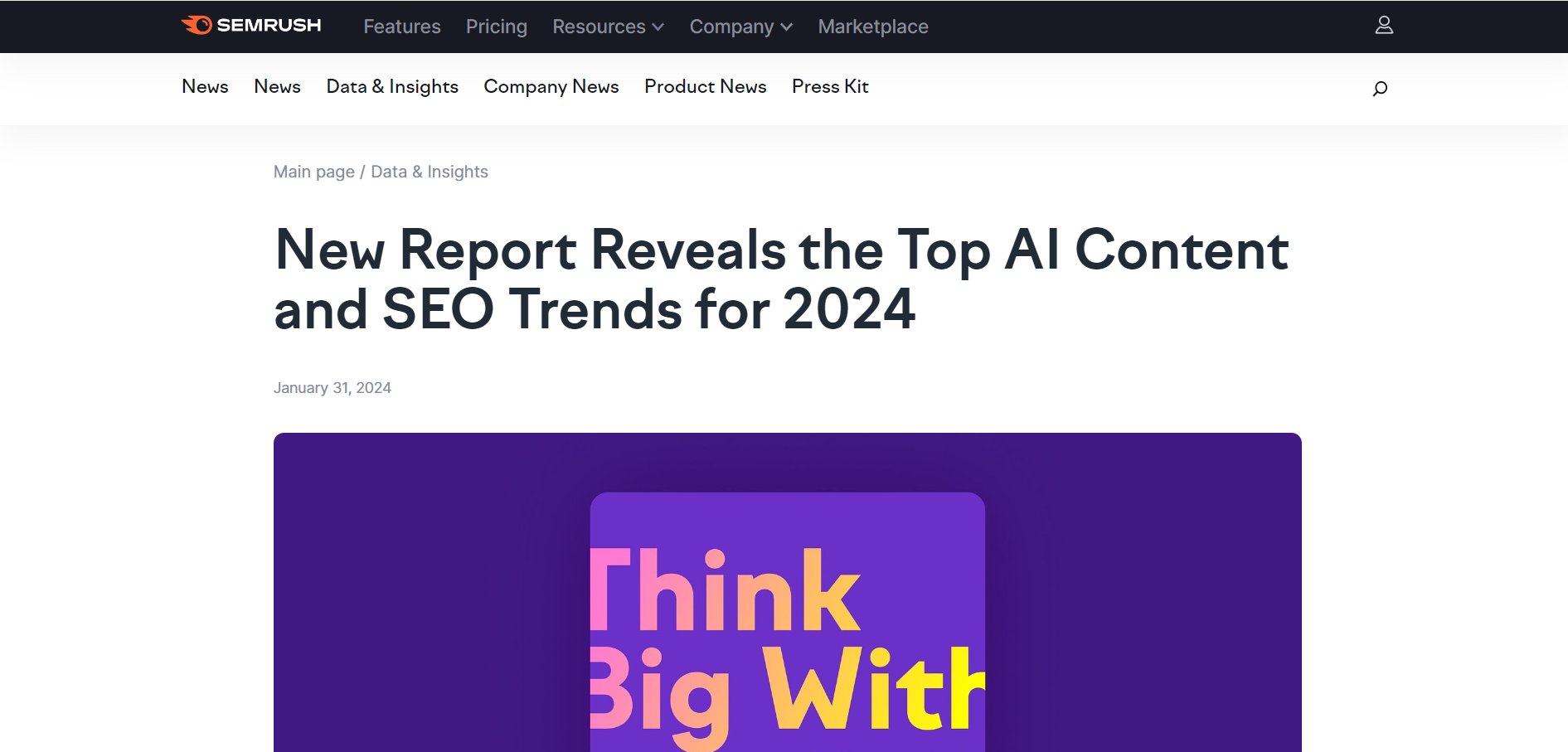
Like the HubSpot example earlier, their industry trends are almost always talked about.
The level of detail that goes into them is unmatched compared to other companies.
And again, it helps build more familiarity with your brand.
Especially when you can repurpose and redistribute on other channels, like social, email, and YouTube.
But there is a caveat.
You actually have to use first-party data.
It has to be an internal study done that hasn’t been cited before.
Once you have that data, you can then use it for redistribution on your other channels.

You can promote it on social or email, or create an article roundup.
The goal is to get publicity and other people talking about that report.
You want people to talk about and share your unique data.
With the DISH method again, if you’re distributing it to social media, put it in an infographic or carousel format so it’s much easier for your audience to share it for you.
Don’t just throw your URL up on social media and call it a day.
Make it digestible for whatever channel you’re repurposing for.
Not only will these reports help you build brand familiarity, but they work extremely well for generating backlinks, too.
Examples of B2B SaaS Companies Doing Industry Reports Right (No It Won’t Just Be HubSpot Again)
Paddle is probably the best example of a company getting publicity through their research.
I’m not even Paddle’s target audience, but I’ve still heard and seen the studies they’ve published.
That speaks volumes to the quality of their work.
They come out with hefty resources pretty much quarterly, but they do a yearly roundup on a particular topic that gets loads of traction.
Take this article on content marketing for example: https://www.paddle.com/blog/does-content-marketing-pay-off

It’s a whole comprehensive guide on whether content marketing works with first party data to back it up.
That one piece had 208 different websites linking to it and it got a ton of publicity too.

11. You Can Consider a User-Generated Content Strategy
If you don’t have a team in place that can help you scale content, you can always have people create content for you.
Especially if you have a reputable brand or high authority site, it won’t be too hard to find people to create content for you.

Source: Business.com
The main challenge here will be quality content.
There’s a solid chance the majority of content you receive will be terrible, like 75% of it will be awful.
So it’s best to have a contributor guideline on your site to make it slightly more clear about what you’ll accept vs what you’ll throw in the trash.
Most people will ignore this, but it should help slightly.
I’d also recommend having a person submit their idea before sending the actual copy.
That way, you can have slightly more control over what they say and how it gets said.
You can either have these people create general thought leadership content or create content that acts as community support (I’ll explain this in the example section)
Like podcasting, you can even invite well-known industry leaders to write content on your site.
That way, you’ll have their audience come to you, and you know it will likely generate some traction.
Plus, they’re getting their (ACTUAL) guest posting in too.
Examples of B2B SaaS Companies Doing User-Generated Content Right
Despite what people say about UGC, I still think there’s room for plenty of potential.
Especially when you can have actual thought leaders publish content on your website.
For this example, I wanted to go with Leonardo.AI.
Leonardo is basically an AI image-creator tool that’s extremely easy to use.
However, their content strategy is based almost entirely around UGC.

They have a whole network of posts where users can share the projects they’re proud of, which not only builds up your content profile but helps build a community in the process, too.
12. Don’t Neglect Video Content, Seriously
Ahh, so we finally made it to video.
Video is the one channel I expect to blow up in the coming months.
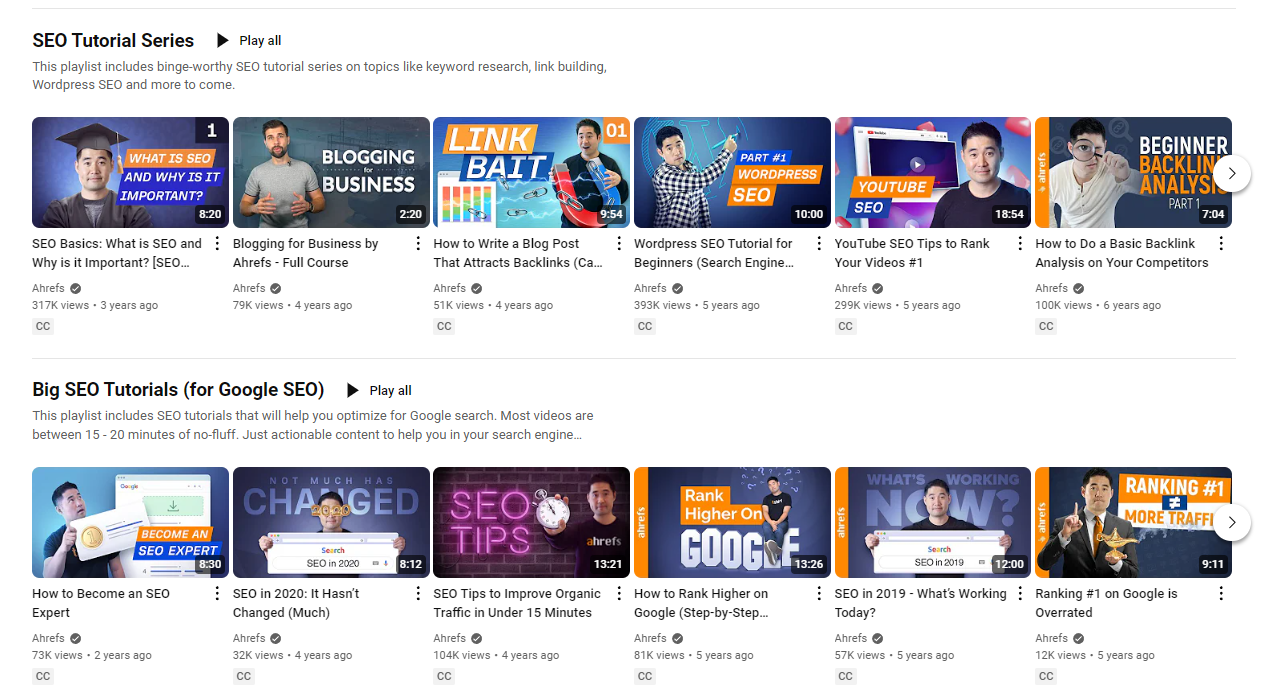
I mean, it’s already there, but the B2B SaaS space hasn’t caught up yet.
YouTube, LinkedIn, TikTok, and Instagram are all primed for easy-to-consume, helpful video content.
As the saying goes, “A picture is worth a thousand words, so a video is worth a million.”
Here’s what I love about video: it is so unbelievably easy to repurpose.
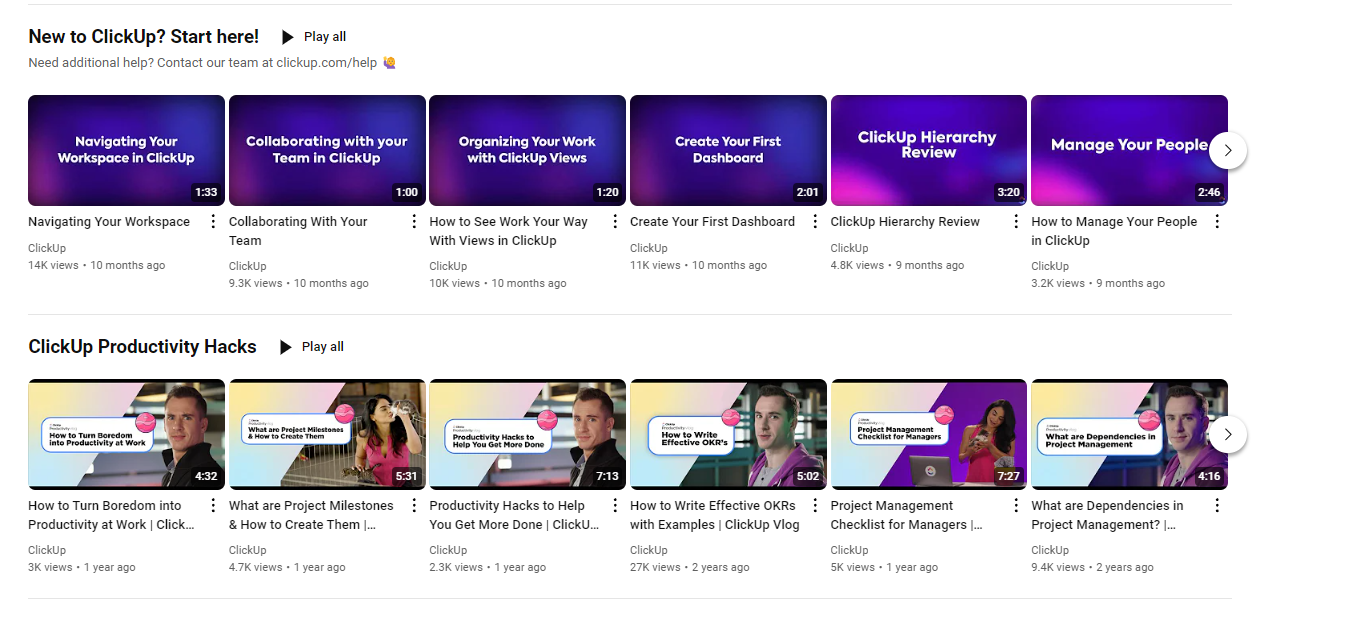
Say you create 1 long-form video that can then become:
- A portion of your newsletter
- A LinkedIn post
- A LinkedIn short
- A YouTube Short
- A TikTok video
- An Article
There are just so many different outlets for repurposing your video content that it will allow you to have significantly more reach with your content.
But the DISH method still applies here.
Don’t create video content for the sake of creating video content.
Create video content that will be genuinely helpful to your audience.
Examples of B2B SaaS Companies Doing Video Marketing Right
While it’s Rand Fishkin-related, I’m going to talk about Moz’s video marketing strategy.
Of course it was led by Rand but let me have something here.

Rand probably became most famous for creating his whiteboard Friday series where he would take a complex topic and break it down on a whiteboard.
There really wasn’t much production behind it besides Rand just writing on the board.
But sometimes simplicity and value wins over production.

This strategy basically built up a dedicated following of users who would follow Moz’s YouTube account just for the whiteboard series.
Again, extremely simple and low budget, but it helped establish Moz as a thought leader in the industry.
It even became such a popular series that they have 900 monthly searches for Whiteboard Friday.

13. Find an Engine for Repurposing Your Content
I really should’ve put this as my #1 recommendation, but repurposing content is like the core engine behind inbound marketing.
From all 12 tactics I recommended, do you think you could manage 5 of them at once?
It will be hard and your quality will absolutely suffer for it.

Source: Search Engine Journal
If you want to make inbound marketing work, you have to have an engine for repurposing that content.
I’ve easily spent over 5+ hours creating this article, but I’ll likely:
- Turn it into a video
- Turn it into a carousel
- Turn it into an infographic
- Take that video and make it into a short
- I’d even send it out in my email newsletter if I stopped being lazy with it
I’ll update this article once I have some repurposed content.

Source: Foundation
Like I mentioned during the video marketing section, 1 video can get you reach on 3 different channels.
Video will obviously be the easiest to repurpose, but that’s not to say it isn’t impossible for other formats.
Truthfully, I’ve even taken my top-performing LinkedIn posts and turned them into articles.
You have plenty of options for repurposing, so hopefully this will give you some inspiration:
- LinkedIn Carousel = Video, Article, Email
- Infographic = LinkedIn Post, Email, Article
- Article = LinkedIn Carousel, Supporting Video, Video Shorts, Email
- Podcast appearance = Video Shorts, LinkedIn Carousel, Article, Email
All in all, the companies doing the best inbound marketing are the ones with a system in place that allows them to redistribute quality rather than operating each channel individually.
Examples of B2B SaaS Companies Properly Repurposing Content (I’m Sorry, I Have to Use Hubspot on this One)
So I’m finally giving in.
I have to use HubSpot as an example here.
Fun fact, HubSpot’s co-founder, Brian Halligan, coined the term inbound marketing.

It only makes sense to include them as one of my examples.
With that being said, they know how to kill it with content repurposing.
For all the assets they have, they have the perfect engine for repurposing that content.
They’ll commonly:
- Create a comprehensive ebook that they repurpose for social, video, email
- Create an in-depth article and repurpose it for social, video, and email
- Take a top-performing video and turn it into an article, video, or social post
For a company doing repurposing right, HubSpot is the best place to get inspiration from.
Bonus Tips for Inbound Marketing (These Aren’t Tactics Necessarily, Just Something to Keep in Mind)
So, while I covered pretty much everything above, I figured I’d use this section to talk about a few bonus points that will help make your strategy more effective.
Actually Track the End Goal (Revenue, CAC, Signups, etc.) Avoid Getting Caught Up in Vanity
As mentioned at the beginning of this article, for inbound marketing to perform, it has to be a tight-knit crew.
Revenue and client acquisition.
That’s what we care about at the end of the day.

Source: Marketing Charts
I’d recommend having all tracking and analytics set up before you go heavy with anything.
We don’t necessarily want to track the success of every channel we have.
BUT, we at least want to track if our overall efforts are effective.
The issue with attribution is that it can cause us to only measure one channel.
But as mentioned before, all of it is connected.
So, instead of tracking the success of a singular channel, you want to track the entire process.
Don’t Neglect Conversion Rate Optimization
Yes I know it’s technically not inbound marketing-related, but it does act as a final gate for inbound.

Imagine you do all this work just for that traffic to leave once they hit your website.
Yes, your channels were “successful,” but what does it matter if it didn’t drive any meaningful results?
Even before you start any inbound marketing tactic, make sure your website is primed to convert that traffic coming from those channels.
You should view your website as a final vortex in a funnel for all traffic you’re engaging with.
The same applies to outbound, too.
Here’s my quick little how-to for focusing on CRO:
- Have clear CTAs throughout the website
- Make it easy for users to contact you
- Have social proof spread throughout your website
Have a Website That’s User Friendly
I probably don’t have to go too in-depth on this one, but like CRO, you don’t want anything to mess up the end goal.
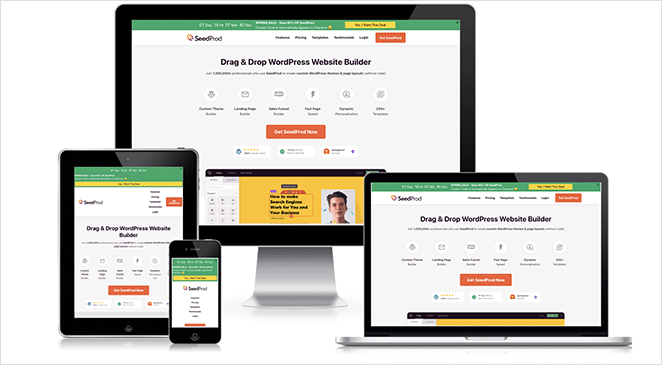
Source: SeedProd
If a user comes to a website that they can barely use on mobile or takes too long to load, it’s only going to push them away from making a final decision.
So before you do anything, make sure your website is optimized for the traffic you wish to bring.
Don’t Silo Inbound Marketing, It’s All Connected
Here’s something I’ll never shy away from.
Inbound marketing (and marketing, to a larger extent) is all connected.
There is no “better channel” because it all contributes to an end goal.

Getting your audience to become more familiar with your brand and taking that next step.
In B2B SaaS especially, it is highly unlikely for a person to find your content and immediately convert.
I mean, it does happen, but it’s very rare.

Source: Gartner
They’ll likely go through multiple other touchpoints before making that final decision.
So, instead of thinking in terms of 1 channel, you need to start thinking about the full journey.
If a user:
- Found you through search
- Signed up for your newsletter
- Started engaging with your social posts
- Started watching your videos
- Had a paid ad finally convince them to take that last step
The process doesn’t always work like this, but you need to avoid thinking in terms of silos and start focusing on the bigger picture.
The full user’s journey.
Have a CRM in Place
While not entirely necessary, it is helpful to have a CRM.
Especially if you intend on running email marketing.
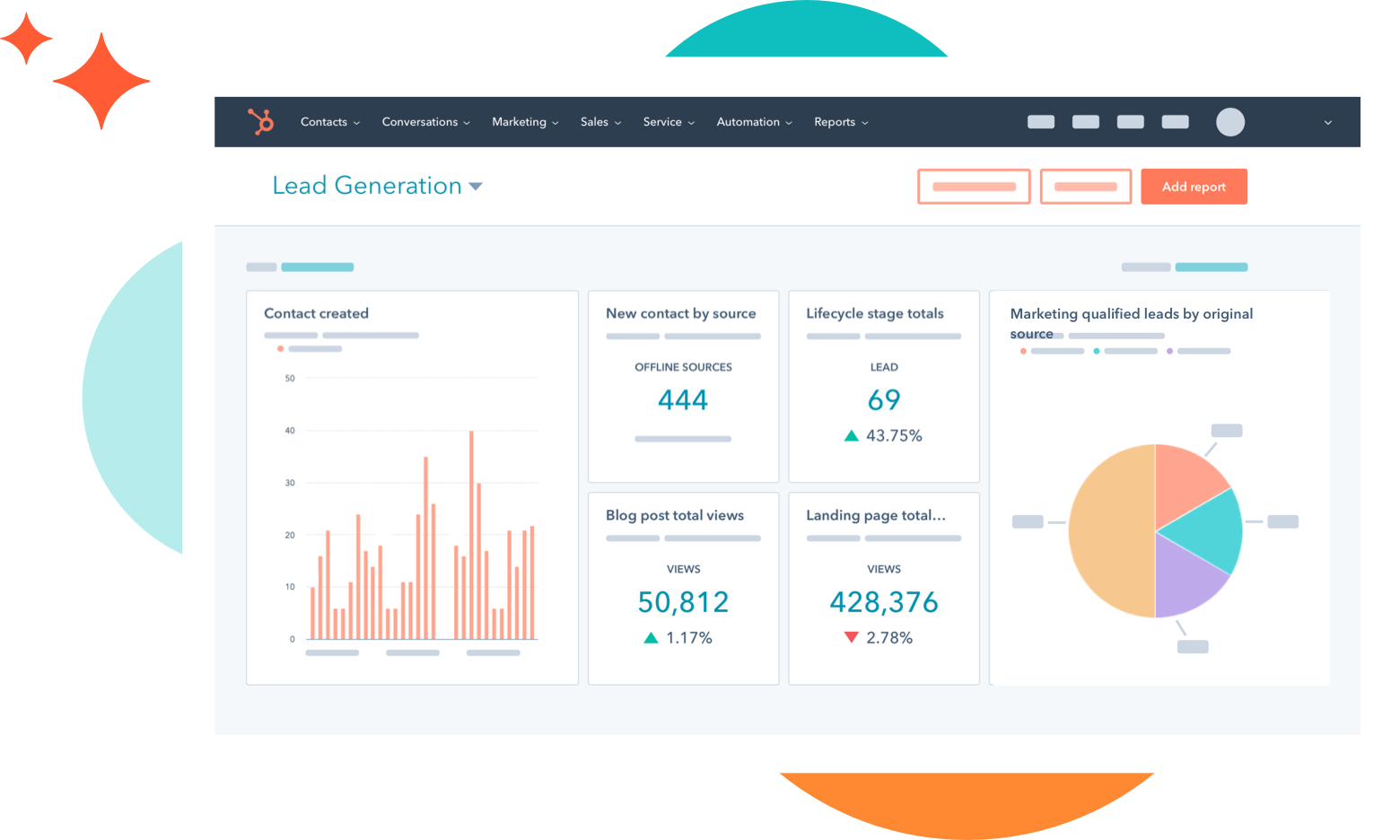
This way, you can get a more in-depth look at the people engaging with your brand.
Obviously the leads that are highly engaged (or warm/hot), you’ll want to spend more time and energy going after them.
Wrapping Up
Well, after a lot of words, hopefully you found this article helpful.
At the end of the day, success in B2B SaaS inbound marketing lies in the helpfulness of the content you create.
Content that gets people to follow more of what you do.
Content that builds brand trust
Content that makes people invested in your product.
Inbound marketing is all about creating that sustainable ecosystem and not falling for quantity over quality.
It’s all based on quality, community, and usefulness.
